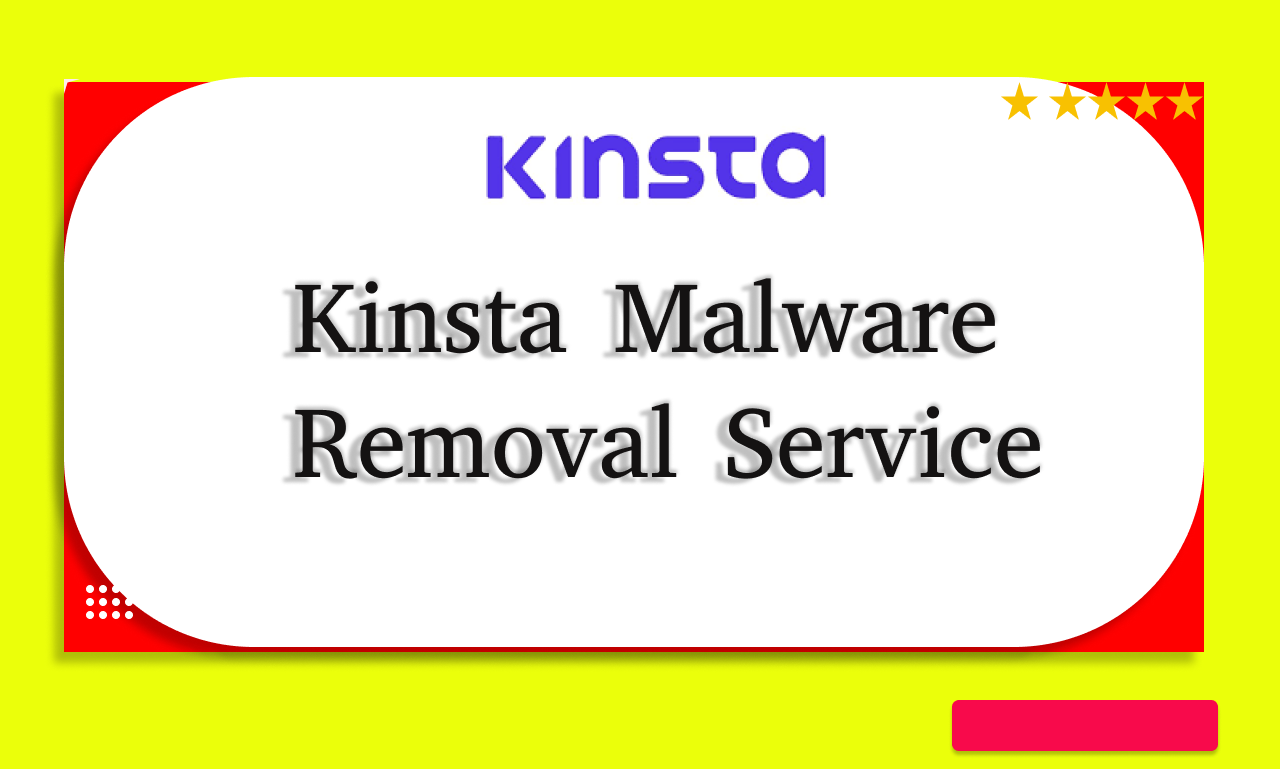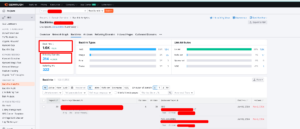Kinsta Malware Issue and Removal Service
If you’re facing a Kinsta malware issue, WpPiP is here to provide effective solutions. Malware can compromise the security of your website and put your visitors at risk. Our specialized Kinsta Malware Issue and Removal Service is designed to swiftly identify and eliminate any malware threats. With our expert team and advanced tools, we ensure that your Kinsta-hosted website remains secure and protected. Don’t let malware disrupt your online presence – trust WpPiP to resolve any Kinsta malware issues and safeguard your website against cyber threats.
Top 50 types of Kinsta website malware that we can remove:
1. Backdoors: Hidden code that grants unauthorized access to a website’s files and systems. 2. Code Injection: Malicious code inserted into legitimate website code, often to steal data or redirect traffic. 3. Cross-Site Scripting (XSS): Exploiting vulnerabilities to inject malicious scripts into webpages, affecting user interaction. 4. Cross-Site Request Forgery (CSRF): Tricking a user’s browser into performing unauthorized actions on a trusted website. 5. Defacement: Malicious modification of a website’s content, often with a message or propaganda. 6. Drive-by Downloads: Malicious code automatically downloads malware onto a visitor’s device when they access the website. 7. Exploit Kits: Pre-built tools that automate attacks by finding and exploiting website vulnerabilities. 8. Fileless Malware: Malware that doesn’t rely on traditional files, making it harder to detect. 9. Formjacking: Stealing user information submitted through website forms, like login credentials or credit card details. 10. Hidden Malware: Malicious code disguised as legitimate content, making it difficult to identify. 11. Injections (SQL, LDAP): Injecting malicious code into databases to manipulate or steal data. 12. Iframe Hijacking: Replacing website content with an iframe displaying malicious content. 13. Malvertising: Malicious advertisements that redirect users to phishing sites or download malware. 14. Mobile Malware: Malware specifically targeting mobile devices accessing websites. 15. Phishing: Creating fake login pages or websites to steal user credentials. 16. Ransomware: Blocking access to a website or its data and demanding payment for its release. 17. Remote Access Trojans (RATs): Tools allowing attackers to remotely control infected devices. 18. SEO Spam: Injecting spam keywords to manipulate search engine rankings for the website. 19. Session Hijacking: Stealing a user’s session ID to impersonate them and access their account. 20. Skimming: Stealing credit card information during online transactions. 21. Social Engineering Attacks: Manipulating users into taking actions that compromise website security. 22. Spam Bots: Automated programs that spam message boards or comment sections on a website. 23. Spyware: Software that gathers information about users’ activity without their consent. 24. Steganography: Hiding malware within seemingly harmless files like images or videos. 25. Trojan Horses: Programs that appear legitimate but contain hidden malicious functionalities. 26. URL Redirects: Malicious redirects take users to phishing sites or malware download pages. 27. Watering Hole Attacks: Targeting websites frequented by a specific group of users to infect their devices. 28. Web Bugs: Tiny images embedded in websites to track user activity without their knowledge. 29. Website Backups: Malware that backs up a website’s data for future attacks or data theft. 30. Worms: Self-replicating malware that spreads across websites within a network.
Additional Kinsta Malware Removal Types (Focusing on Functionality):
31. Adware: Displays unwanted advertisements on a website. 32. Cryptojacking: Uses website visitors’ processing power to mine cryptocurrency for the attacker. 33. Denial-of-Service (DoS): Overwhelming a website with traffic to make it inaccessible to legitimate users. 34. Link Spam: Inserting irrelevant or misleading links within a website. 35. Malicious Pop-ups: Displaying unwanted pop-up windows with ads, surveys, or fake alerts. 36. Malvertising Redirects: Malicious redirects from legitimate advertising networks. 37. Malicious SEO Redirects: Redirects to spammy or irrelevant content to manipulate search rankings. 38. Password Stealers: Programs that capture user login credentials from forms. 39. Phishing Kits: Pre-built tools for creating and launching phishing attacks. 40. SEO Black Hat Techniques: Unethical methods to improve search engine rankings, often harming user experience. 41. Spam Injections: Injecting spam content into forum posts, comments, or contact forms. 42. Spam SEO Backlinks: Creating low-quality backlinks to a website to manipulate search rankings. 43. Spamware: Unsolicited emails promoting products or services, often containing malware links. 44. Spambots: Automated programs that spread spam messages or comments across the web. 45. Spoofing: Impersonating a legitimate website or user to gain trust and steal information. 46. SQL Injection Attacks: Specifically targeting vulnerabilities in SQL databases to steal or manipulate data. 47. Stealer Malware: Malware designed to steal various types of data from websites or user devices, including passwords, financial information, or intellectual property. 48. Traffic Bots: Malicious bots that generate fake website traffic to inflate metrics or manipulate analytics. 49. Watering Hole Attacks (Targeted): Targeting websites frequented by a specific user group with malware relevant to their interests or industry. 50. Zero-Day Exploits: Exploiting vulnerabilities in software before a patch is available, makes them highly dangerous.
Kinsta Malware Removal Service Includes:
✅ Hacked website clean Backup files and database
✅Deep malware Scan of all Files and WordPress malware removal
✅Manually remove malware from Full Server or Cpanel
✅Hosting suspension removal
✅Fix redirecting issues
✅Blacklist removal (Google, Norton, McAfee, etc)
✅Google Japanese spam link removal
✅Plugins update
✅Fix website errors
✅SSL Installation
✅Any issue or bug Fixed
✅30 days support












Reviews
There are no reviews yet.